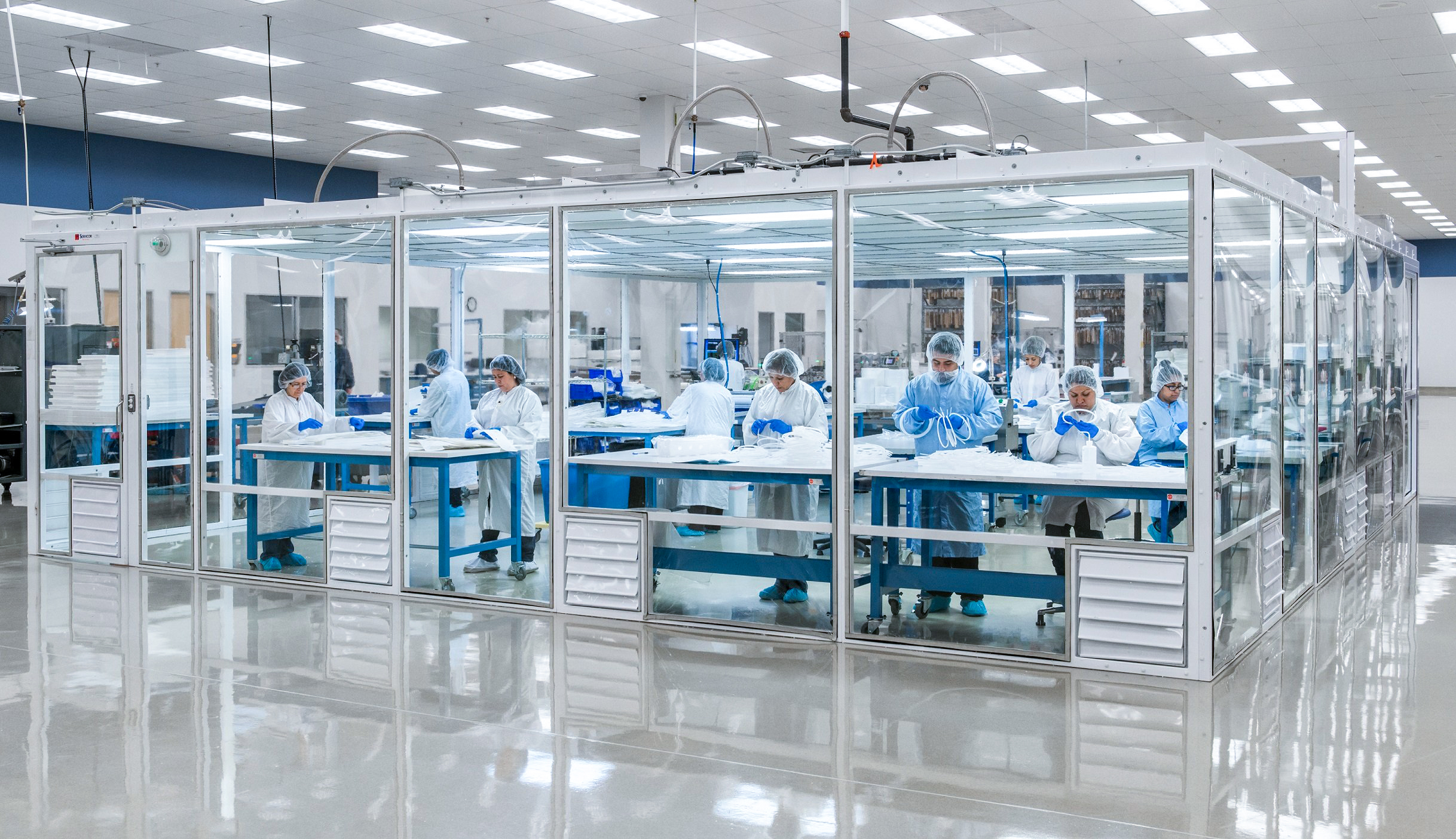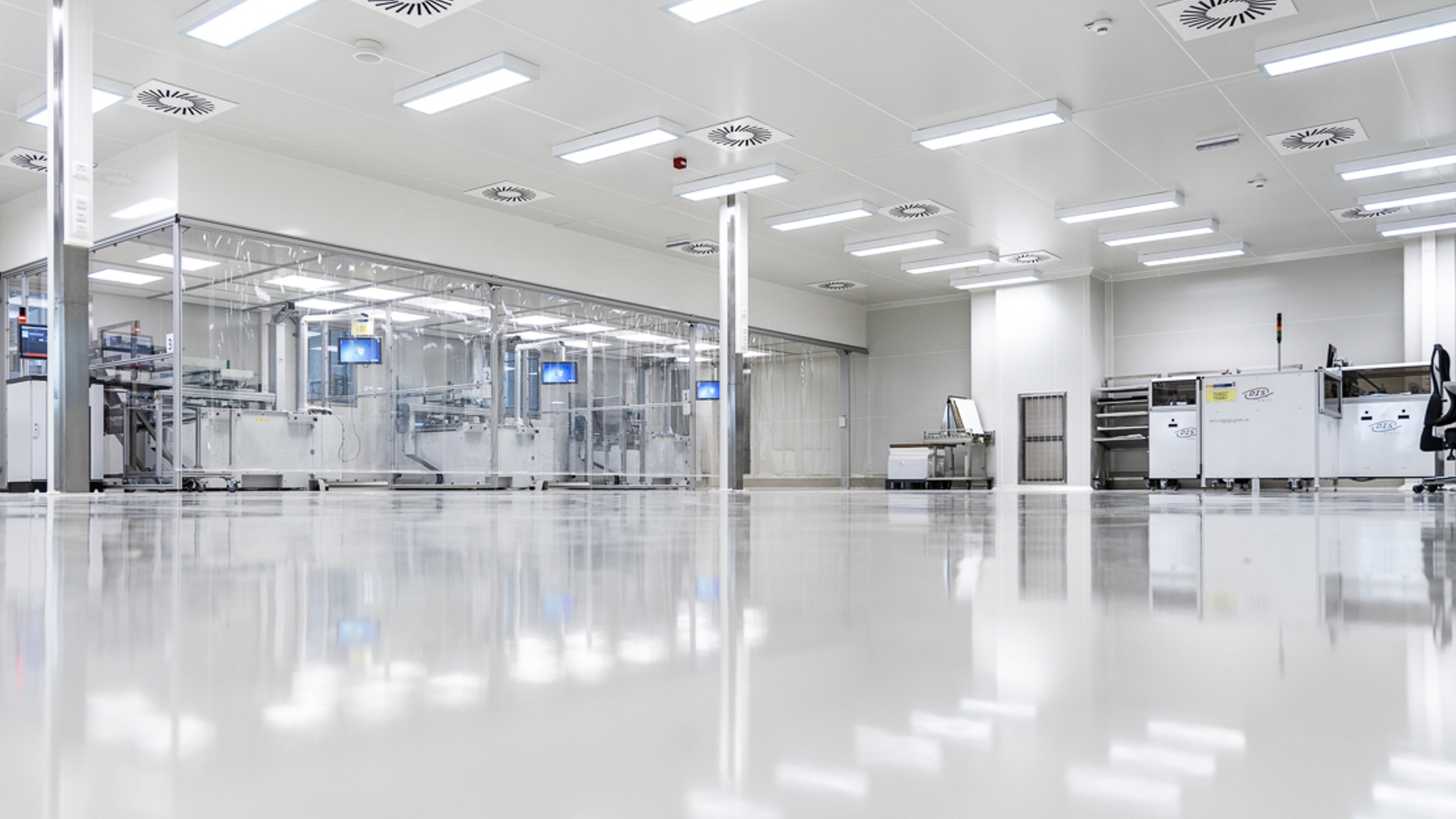Cleanrooms serve as the "respiratory organs" of high-tech industries like semiconductors, biopharmaceuticals, and precision instruments. Their environmental control capabilities directly determine product quality and yield rates. Within cleanroom structural systems, aluminum profiles have evolved from mere support components intocore functional materialsthat ensure contamination control. Through specialized alloy formulations, surface treatments, and structural designs, modern cleanroom-specific aluminum profiles meet stringent physical requirements while functioning as critical barriers against micro-contamination.

In ISO Class 5+ environments, conventional construction materials become contamination sources: dust accumulation on metal edges, coating delamination particles, and static-attracted microbes can compromise sensitive components or pharmaceutical products. Dedicated cleanroom aluminum profiles address these challenges throughtripartite technical controls:
Material Property Control: Ultra-low particle emission and self-cleaning surfaces
Structural Optimization: Elimination of dead zones and guaranteed airtightness
Functional Integration: Support for HEPA systems and real-time environmental monitoring
*Data from a semiconductor fab shows: After adopting specialized profiles, ≥0.5μm particles in wafer processing areas stabilized at ≤3,520 pcs/m³—a 90%+ contamination reduction versus conventional materials.*
2.1 Material Performance: Beyond "Low-Particulate"

Advanced Alloy Formulation: 6063-T5 aluminum alloy with 0.1-0.3% copper (enhanced corrosion resistance) and 0.2-0.6% silicon (optimized extrudability)
Dual-Surface Protection:
Base layer: 6-8μm hard anodization (2× thicker than standard profiles)
Top layer: Nano-silver infused PVDF coating (≥70% fluoropolymer) for antimicrobial/self-cleaning properties
Antistatic Performance: Surface resistance maintained at 10⁶-10⁹Ω
2.2 Cleanroom-Oriented Structural Design
Zero-Particle-Accumulation Topology:
All edges with ≥1mm radius rounding
Seamless welding at joints
Surface roughness Ra≤0.8μm (mirror-finish equivalent)
Dynamic Sealing System: Custom gasket grooves achieving ≤1.0×10⁻³ Pa·m³/s leak rate
Table: Key Parameter Comparison
|
Parameter |
Cleanroom Profiles |
Industrial Profiles |
Standard |
|
Anodizing Thickness |
10-25μm |
5-10μm |
GB/T 5237.2 |
|
Surface Resistance |
10⁶-10⁹Ω |
Uncontrolled |
IEC 61340-5-1 |
|
Edge Radius |
≥1mm |
≤0.5mm |
Visual Inspection |
|
Joint Technology |
Seamless Welding |
Bolted Connections |
ISO 14644-1 |
|
Bacterial Suppression |
>90% |
None |
JIS Z 2801 |
2.3 Breakthrough Process Technologies
Plasma Pre-Cleaning: Increases surface oxygen to 40-60at% for denser oxide layers
UV-Cured Coatings: Nano-level smoothness prevents contaminant adhesion
Smart Integration: Graphene sensors (0.1ppm sensitivity) embedded for real-time monitoring

3.1 Specification Selection Principles
Small/Medium Cleanrooms: 4040/4080 series (300kg+ load capacity)
Large Multi-Level Structures: 8080/100100 series with ≥1.2mm wall thickness
Specialized Connectors: Dual-R-slot, I-beam, and T-slot accessories for modular assembly
3.2 Industry-Specific Solutions
Electronics/Semiconductors:
50-series thick-wall profiles (1.2mm)
FFU air supply integration + ESD dissipation paths
Pharmaceutical GMP Facilities:
Radius-cornered window frames + dual-seal doors
Electrophoretic silver/white surfaces for sterilization visibility
Food Aseptic Zones:
PVC-base profiles + anti-corrosion coating
Mobility-enabled (caster modules)
Table: Technical Requirements by Cleanliness Class
|
Class |
Profile Series |
Surface Finish |
Special Features |
|
ISO Class 5 (100) |
50/60 Thick-Wall |
Nano-Coating + Dual Anodizing |
Airtflow Channels |
|
ISO Class 6 (1,000) |
40 Standard |
Electrophoretic/Powder Coated |
R≥1mm Edges |
|
ISO Class 7 (10,000) |
30/40 Economy |
≥15μm Anodizing |
Seamless Joints |
|
Mobile Clean Tents |
Lightweight 40 |
Basic ESD Control |
Integrated Casters |

Modern cleanroom profiles enable revolutionary functionality:
Energy-Optimized Designs: Airflow channels improve circulation efficiency by 40% (22% energy savings in fabs)
Self-Monitoring Systems: Embedded sensors track particles/temperature/humidity
Rapid Deployment: Modular systems reduce ISO Class 7 cleanroom build time by 66%, enabling line reconfiguration
*A leading PV manufacturer achieved beyond-target cleanliness with smart profiles while reducing air changes from 50 to 35/h—saving >$150k/year in energy.*
Maintenance Optimization: Quarterly wiping with 70% isopropanol (60% lower cost vs. stainless steel)
Extended Service Life: 15+ years with PVDF coatings
Reusability: 80%+ relocation reuse rate through modular design
In cleanroom micro-battlefields, a 0.5μm particle is a destructive "projectile." When 6063-T5 aluminum undergoes plasma cleaning, nano-coating, and topological optimization to become cleanroom-specific profiles, it transforms from passive "skeleton" to active "immune system"—blocking particle adhesion via 10⁶-10⁹Ω static control, rejecting contaminants with Ra≤0.8μm surfaces, and suppressing 90%+ microbes through dual-layer coatings.This redefines cleanliness limits through materials engineering.
As semiconductor 3nm processes and cell therapies demand stricter standards, innovation focuses onintegrating airtightness and intelligence: Airflow channel designs and embedded sensors are advancing cleanrooms from "static cleanliness" todynamic contamination resistance. Choosing specialized aluminum profiles means adopting anISO 14644-1 Class 5-certified cleanliness genome.